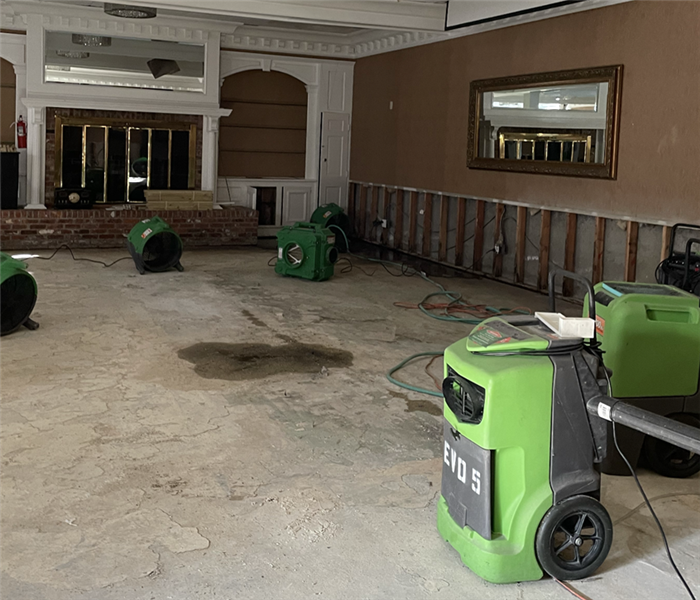We Target the Source of Water Damage
2/9/2022 (Permalink)
We Target the Source of Water Damage
There are a lot of reasons why water damages happen, oftentimes it can come "out of nowhere". Addressing these concerns begins by identifying the source of the damage, which can sometimes hide behind layers of wall or ceiling materials. In some situations, you might not be sure that a water loss exists until you can recognize some of the effects these incidents can leave behind.
When you suspect water damage to your office building, you want to resolve it as soon as possible. Prolonged exposure to moisture creates more damages to the structural elements as it allows for more compromising effects like deterioration or mold growth. Our SERVPRO technicians have a fast and thorough response that can help you to not only identify water losses and moisture, but dry up this damage to make it “Like it never even happened.”
How Do You Identify Water Damage?
When you are not sure that a water loss incident exists, how can you know for sure? Several indications that can reveal water or moisture, even if the majority of this damaged area exists behind surface materials in wall cavities or structural openings. You can start by looking for things such as:
- Yellowing – Drywall is one of the most common structural materials used in office spaces. While you do not typically have to worry about the metal framework becoming damaged by water, drywall can quickly and readily absorb moisture and water from a persistent leak. The surface around this water-damaged area of the sheetrock can often show yellowing in an uneven blotch.
- Spotting - Prolonged exposure to moisture, or the unresolved saturation of materials, can facilitate mold growth in areas that you cannot see. The migration of mold colonies can show as spotting on the surface of the drywall, which can be multiple colors: black, green, blue, or even orange.
- Material Deterioration – Sagging or damaged materials are often an excellent indication of water damage. As materials get saturated, they can become too heavy for screws or nails used to install them to support them. Sagging ceilings or bloated wall surfaces can indicate a substantial water loss concern.
Do You Need Professional Restoration for Damp Drywall?
With drywall being such a key and standardized element to most buildings, restoring it after a water loss is something that you want to address immediately. Because these materials can become irreparably damaged in often as little as 24 hours of exposure, removal and reconstruction is often the fastest and most reliable approach for overcoming damp drywall. Our SERVPRO professionals can help with restoring these damaged areas and elements in the office, as sheetrock can be a considerable challenge due to:
- Structural Deterioration – Exposure to migrating water or moisture in any area of your office can allow for the bloating and deterioration of drywall surfaces.
- Porous Surfaces – The sheetrock’s permeance and porosity make it one of the most susceptible structural elements to moving water or the presence of moisture in the environment.
- Facilitate Mold Growth – Because drywall is an organic material, it can be a host for developing mold colonies.
No matter how subtle water losses might initially appear, they all must get addressed with the same care in the cleaning and restoration process, as soon as possible. SERVPRO of Midtown Manhattan can help 24/7 each day of the year by calling (212) 768-9400.






 24/7 Emergency Service
24/7 Emergency Service
